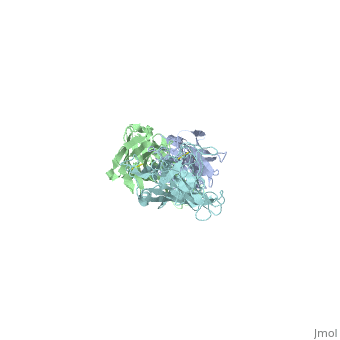1fj1
LYME DISEASE ANTIGEN OSPA IN COMPLEX WITH NEUTRALIZING ANTIBODY FAB LA-2LYME DISEASE ANTIGEN OSPA IN COMPLEX WITH NEUTRALIZING ANTIBODY FAB LA-2
Structural highlights
FunctionEvolutionary Conservation Check, as determined by ConSurfDB. You may read the explanation of the method and the full data available from ConSurf. Publication Abstract from PubMedOuter surface protein A (OspA) is a major lipoprotein of the Borrelia burgdorferi spirochete, the causative agent of Lyme disease. Vaccination with OspA generates an immune response that can prevent bacterial transmission to a mammalian host during the attachment of an infected tick. However, the protective capacity of immune sera cannot be predicted by measuring total anti-OspA antibody. The murine monoclonal antibody LA-2 defines an important protective B-cell epitope of OspA against which protective sera have strong levels of reactivity. We have now mapped the LA-2 epitope of OspA using both NMR chemical-shift perturbation measurements in solution and X-ray crystal structure determination. LA-2 recognizes the three surface-exposed loops of the C-terminal domain of OspA that are on the tip of the elongated molecule most distant from the lipid-modified N terminus. The structure suggests that the natural variation at OspA sequence position 208 in the first loop is a major limiting factor for antibody cross-reactivity between different Lyme disease-causing Borrelia strains. The unusual Fab-dominated lattice of the crystal also permits a rare view of antigen flexibility within an antigen:antibody complex. These results provide a rationale for improvements in OspA-based vaccines and suggest possible designs for more direct tests of antibody protective levels in vaccinated individuals. Structural identification of a key protective B-cell epitope in Lyme disease antigen OspA.,Ding W, Huang X, Yang X, Dunn JJ, Luft BJ, Koide S, Lawson CL J Mol Biol. 2000 Oct 6;302(5):1153-64. PMID:11183781[1] From MEDLINE®/PubMed®, a database of the U.S. National Library of Medicine. See AlsoReferences
|
| ||||||||||||||||
